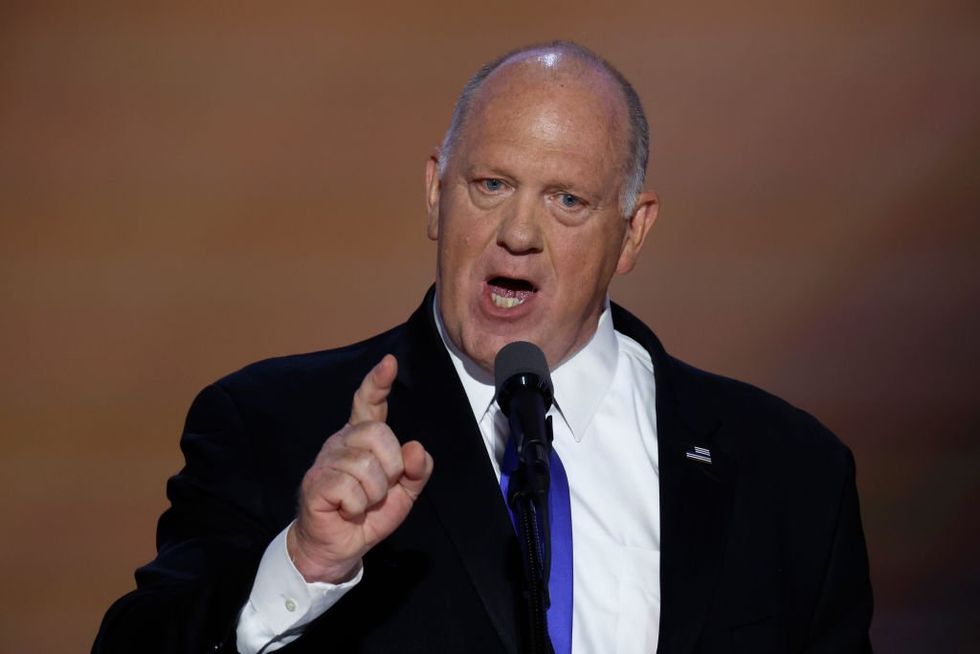The dangers of the Biden-Harris agenda to put brakes on fighter-jet program
Administration 'has demonstrated a level of disdain for essential defense programs' while jumping at 'misguided, profligate spending'



While the People’s Liberation Army, Air Force, and Navy are all experiencing explosive growth, and their military footprint is expanding across the western Pacific, the Biden-Harris administration has signaled they are putting the brakes on the Next Generation Air Dominance (NGAD) fighter program. If they follow through, they’d be pulling the plug on what’s designed as an answer to the daunting threat in the skies from an increasingly powerful Chinese Air Force.
The NGAD fighter, built on more than a decade of research and development, is intended to maintain U.S. dominance in air combat. Our military relies on, even expects, control of the skies. Indeed, no U.S. soldier or Marine has been strafed by enemy aircraft since the Korean War, and that is no accident. It took hard work and ingenuity from engineers and business leaders who developed best-in-class technology that transformed the U.S. military into the most feared force in the skies, as well as courage and dedication from lawmakers and successive administrations to fund it.

Meanwhile, China’s military grows more lethal. Their air defenses are new and come online with longer and longer ranges. Their air-to-air missiles have a long arm, and they are mastering stealth technology, once the exclusive advantage of the U.S. Air Force. They are fielding the J-20 fighter to rival our 5th generation aircraft and building them faster and in greater numbers. In a war of attrition, the math would not be in our favor.
The solution that was intended to keep our pilots alive and dominant and keep air attacks away from our soldiers’ heads was a new generation of fighter jet. NGAD is being designed with advanced stealth capabilities, enhanced sensors, and integrated operations with unmanned systems. It represents a qualitative jump beyond current 5th gen fighters.
With it, American pilots can continue to enjoy a technological advantage. Without it, we lose. And if we lose, it will mean more than the downing of American planes, it could mark the end of Pax Americana, the relative peace insured by our military dominance since WWII.
China is also innovating, advancing its own 6th generation and unmanned fighter swarm initiatives. Unchallenged, Beijing could project power beyond the IndoPacific, potentially eclipsing the West in air superiority throughout the 2030s and 2040s.

Should Beijing decide to export advanced aircraft like the J-20B and its NGAD variants, it would present a challenge orders of magnitude greater and more complex. Imagine adversaries like Iran, North Korea, and Venezuela—to say nothing of Russia—all with access to advanced Chinese air capabilities greater than our own. It would invite a level of military adventurism previously unseen. Such is the danger of halting or slowing our NGAD efforts.
Defense officials have signaled that tight budgets are to blame for tough decisions ahead. Bills for current programs like the B21 and nuclear modernization are likely to take precedence over research and development on future systems. This is the perennial problem of putting off investment in the future for today’s exigencies. Households across America wrestle with this dilemma every day. World class militaries, if they hope to stay that way, must be more disciplined.
That doesn’t discount the fact that military spending is constrained. Indeed, the Pentagon has lost purchasing power as the defense budget failed to keep up with the inflation under the current administration. Yet, with defense spending under such pressure, one wonders why the Pentagon is pouring taxpayer money into initiatives related to climate change, like the $500 million it proposed spending on research into synthetic meat, or the billions being spent to replace 174,000 non-tactical vehicles with EVs.

More broadly the Biden-Harris administration has demonstrated a level of disdain for essential defense programs through this kind of misguided, profligate spending. Their $1 trillion spending spree on green initiatives in the Inflation Reduction Act was at least supported by a partisan majority in Congress. Their decision to flush half a trillion dollars through student loan forgiveness was unilateral, made without a single vote on the Hill after being deemed illegal by the U.S. Supreme Court.
In pausing, or canceling, programs like NGAD the Biden-Harris Administration is ceding our military edge to China, and in light of what they’ve chosen to fund instead, done so cheaply.
Some are hopeful that change in administration will reinvigorate defense spending. Trump has pledged, as he did in 2016, to rebuild military strength. But American security shouldn’t be contingent on which party holds the White House. Whatever the outcome in November, America must stay focused on maintaining its military technical advantage.
We can’t afford to defer needed investments in our security. Geostrategic risks are rising. Falling behind in assuring continued air dominance will only make them worse, weakening deterrence as our adversaries grow closer and more belligerent and risking outcomes in future conflicts.
Cale Brown is a Senior Advisor with Polaris National Security and former director on the National Security Council.
SUPPORT TRUTHFUL JOURNALISM. MAKE A DONATION TO THE NONPROFIT WND NEWS CENTER. THANK YOU!
Originally Published at Daily Wire, World Net Daily, or The Blaze
What's Your Reaction?
































































































